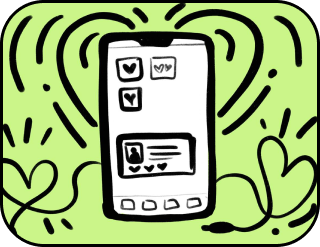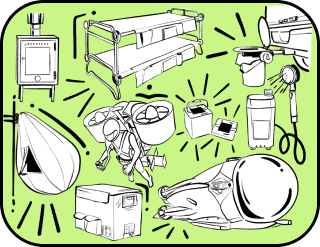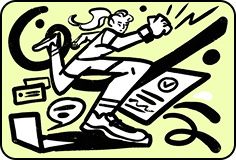How to wake up your brain: Techniques for boosting mental alertness
In today’s era of high technology, multitasking, rapid pace, and global digitization, our brains are under enormous strain, which, paradoxically, leads to laziness and sluggishness. Our brains are designed by nature to seek and identify. These processes are inseparable from pauses, which are necessary to find, understand, integrate into our lives, and then learn to apply when needed.
Our brain helps us survive, and if it is not tasked with learning and exploring the world around us, it starts to slow down, shutting down the areas that contribute to development. The more we explore the world around us, create external connections with other people, and engage in live interaction, the sharper our perception and quicker our response become. Why does this happen? Because interacting with the world around us activates the maximum number of brain regions, leading not just to the creation of new neural connections but also providing valuable exercise for the brain itself.
Moreover, much of our lives have moved online. On one hand, we have simplified information retrieval – now, with just a click, we can access what previously required extensive searching and consulting various sources and people. On the other hand, we have stopped exercising our brains. Why think when, with a single button press, we can find what we need?
The weakening of the brain’s search abilities combined with information overload makes a person unable to respond effectively in critical situations. People lose the ability to process important information because it’s easier to grasp trivial details than to engage with something that requires deeper thought.
Physiological causes of sluggishness can include lack of sleep, chronic stress, poor diet, vitamin and nutrient deficiencies, a sedentary lifestyle, exposure to toxins, aging, diseases, and injuries.
Psychological causes can include fears, limited thinking, lack of self-confidence, procrastination, stress and anxiety, lack of motivation, monotonous activity, and insufficient mental exercise.
So, what can help us awaken the dormant and fatigued areas of our brains? Both lifestyle and technical solutions.
Preventing digital addiction. As many studies show, the impact of the digital environment on brain function is significant, so it’s important to follow some rules:
- Reduce your information consumption to the necessary minimum. Watch, read, and listen only to what you truly need.
- Turn off sound and pop-up notifications on your smartphone. By minimizing external distractions, you will gradually develop better focus on the task at hand. Constant switching leads to loss of concentration and, consequently, to distraction.
- Remember! You are not obligated to always be available. You have the right to respond to calls and messages when it’s convenient for you. If work demands it, set notifications only for work-related communications.
- In the morning, immediately after waking up, do not reach for your phone. Give yourself time to wake up, listen to your body’s needs, and meet them consciously.
- An hour before bedtime, avoid using your phone. Allow your brain to shift to a more relaxed rhythm. You will find that this positively affects not only your sleep but also your overall well-being.
- Designate certain areas where phone use is not allowed: bedroom, kitchen, bathroom. Let these zones become places of rest for your brain.
- When you pick up your phone, ask yourself: Why am I picking it up? What is the purpose? You might be reaching for your phone unconsciously, out of habit.
- Engage more in face-to-face interactions, visit public places, meet new people, and expand your network of contacts.
Train your thinking skills: create conditions for your brain to have time to process the information you’ve learned. Increase your social activity: interact with people face-to-face, invest time and emotions in these interactions. Write with a pen on paper. Ask yourself: How would I solve this problem without the internet, smartphone, or gadget? Seek non-trivial solutions to ordinary tasks, and your brain will become your ally and reliable helper, capable of reacting appropriately in any unexpected situation.
Here are some everyday, accessible, and simple ways to stimulate your brain. It’s recommended to write them down and place the list in a visible spot:
- Sleep more.
- Engage in physical activity: go outside, exercise, or simply walk. Our brains thrive on movement because it improves blood flow to the brain and boosts energy levels.
- Do exercises not only for your body but also for your brain. Keep yourself from getting bored. Solve puzzles, play board games, or tackle math problems. Regular practice helps enhance cognitive abilities.
- Read books: from popular science to fiction. Reading will broaden your horizons and improve your memory.
- Watch documentaries and educational videos to discover the fascinating world of knowledge and interesting facts.
- Try new hobbies. Always learn something new – drawing, playing musical instruments, tightrope walking, or cooking. This stimulates creative thinking.
- Learn new languages. This helps develop memory and improve cognitive functions.
- Practice meditation. Peace of mind and reduced stress through regular meditation sessions allow you and your brain to take the necessary pause for processing information.
- Travel. Discover new places, cultures, and traditions. Travel broadens horizons and fosters creativity. And by the way, you don’t need to go to another country to change your scenery – walking through unfamiliar streets or visiting a nearby city you haven’t been to before is enough.
- Engage with diverse and interesting people. Interaction develops social skills and helps you understand different perspectives.
- Listen to podcasts and audiobooks. Stimulate your brain even while doing household chores or traveling.
- Set goals. Define what you want to achieve and work towards it.
- Experiment with food and try dishes from different world cuisines, within reasonable limits.
- Explore art. Visit museums, galleries, and exhibitions. Art broadens perception and develops empathy.
- Study the history of different eras and civilizations. Understanding the past often helps in better comprehending the present.
- Create with your hands: engage in crafts, build something, or draw. Working with your hands stimulates creative potential.
- And don’t forget to smile and notice the good around you. A positive attitude contributes to a happy life.
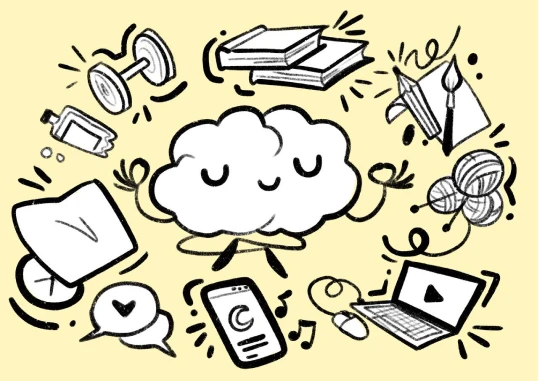
In our age of high technology and remarkable inventions, it would be surprising if scientists had not developed technologies to stimulate brain activity, improve memory, and accelerate learning processes.
Unlike a computer, our brain cannot simply record data and retrieve it on command. It filters information carefully: retaining what is necessary and discarding what it considers irrelevant. Sometimes it can be very difficult to recall something, even if it is urgent or critically important.
Fortunately, modern technology is opening the door to the future of learning, where acquiring knowledge – whether it’s flying an airplane or learning a foreign language – will become faster and more accessible.
Brain Stimulation
In fact, brain stimulation is one of the simplest ways to enhance learning ability, as it doesn’t involve creating something new but rather amplifies inherent capabilities.
With the advent of functional magnetic resonance imaging (fMRI), scientists were able to see for the first time which areas of the brain are activated during various activities. Having identified the regions responsible for learning and memory, they have now managed to reduce training time using transcranial brain stimulation without surgical intervention.
The technology works as follows: the learner wears a cap with electrodes for electroencephalography. A small constant current of 2 mA is applied to the electrodes for 30 minutes, which increases the excitability of brain neurons. A mild, slight tingling sensation occurs but does not cause significant discomfort.
As a result of the current, the intensity of brain waves in response to sensory stimulation remains 2.5 times higher than the usual level even 50 minutes later. This suggests that learning time can be reduced by half or that the ability to absorb necessary information can be doubled. Decision-making accuracy was maintained for over 40 minutes, whereas under normal conditions concentration declines after just 20 minutes. In comparison, caffeine or other similar stimulants did not come close to such results.
Moreover, MRI scans revealed structural changes in the brain five days after stimulation. It was found that the bundles of nerve fibers connecting the neurons in the cerebral cortex were of higher quality and were able to transmit information more quickly following transcranial stimulation.
Currently, transcranial brain stimulation has not yet moved beyond research laboratory walls. However, it is possible that within the next 5–10 years, the first smart devices that significantly accelerate learning will appear on the market. These devices could address not only learning and memory issues but also problems like the inattentiveness of tired drivers by activating the brain and enhancing concentration and attention.
Another device for transcranial stimulation is the tDCS Transcranial Stimulation Kit, which is currently used by many laboratories to develop treatments for depression, chronic pain, and, of course, to improve learning abilities.
There is also an innovative project called GoFlow 1 .A group of enthusiasts announced in early 2012 their intention to develop a simple and accessible transcranial stimulation device. Their goal was to create a device available to ordinary consumers.
The GoFlow β1 device can be assembled and set up in just half an hour. It consists of a headband with a 5 mA fuse, a standard AA battery, a control chip, and a pair of electrodes. The device offers four current settings – 0.5, 1.0, 1.5, and 2 mA – with gradual power increase, allowing the device to be turned off if discomfort arises. The GoFlow β1 project was launched relatively recently, but it is already possible to contact the developers to pre-order or obtain the device schematic for self-assembly.
It is important to remember that the effects of such stimulation are still unknown, especially in the long term. Therefore, be cautious and approach such experiments with awareness.
Speed and Agility
There is a training tool called NeuroTracker, designed to improve attention, agility, and reaction time. This tool has been used successfully by athletes for a long time.
It appears simple: on a 3D screen, eight colored balls bounce around. The trainee must track them according to various tasks. For instance, they might need to follow only the red balls while ignoring the others or predict the movements of one or more balls.
With NeuroTracker, an athlete, such as a soccer player, learns to track the ball in any situation. For ordinary people, this type of trainer enhances concentration and the ability to maintain focus on a single task at a given time.
The trainer doesn’t require extraordinary effort or expense: simple software and 3D TVs can help you set it up right at home.
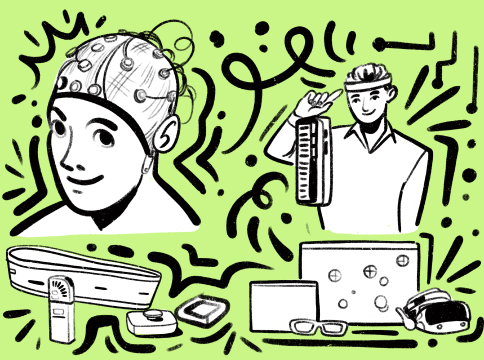
Your thought is a big bang of ideas. Our journal is its source.
Thank you!


